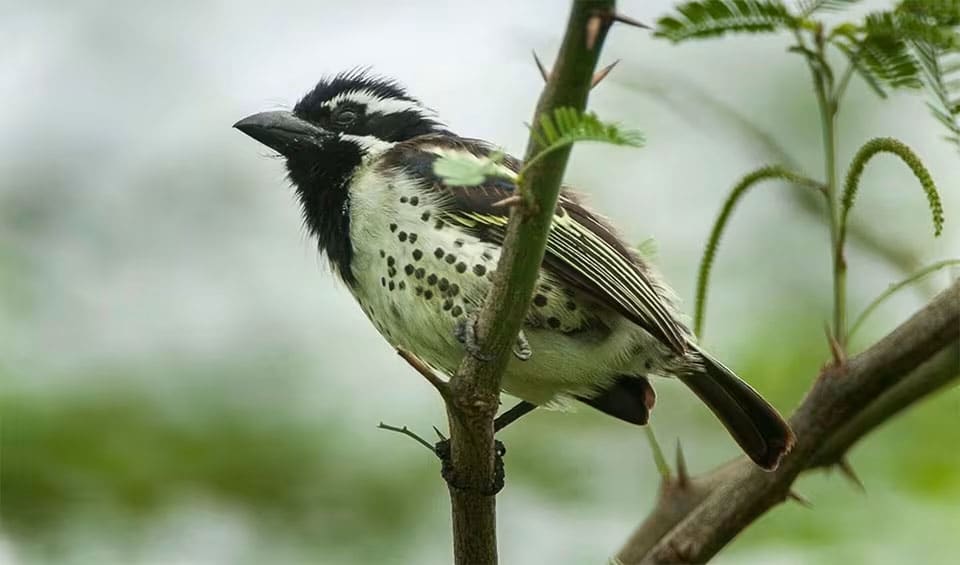Tricholaema
This genus is still a mystery to scientists
These birds, which were previously classified under the Capitonidae and sometimes the Ramphastidae families, have since been recognized as members of the Lybiidae family, which is confined to the African continent. This realignment in taxonomic classification illustrates the dynamic nature of avian systematics as new data emerge from morphological and molecular studies.
Tricholaema barbets, as they are commonly known, were first described by French ornithologists Jules and Édouard Verreaux in 1855. The genus name itself is evocative, derived from the Ancient Greek words ‘this,’ meaning ‘hair,’ and ‘limos,’ meaning ‘throat.’ This nomenclature references the distinctive bristles found at the base of the bill, resembling hairs, which are especially prominent in the hairy-breasted barbet (Tricholaema hirsuta).
The various species within the Tricholaema genus are relatively small-sized barbets characterized by their vibrant plumage, which often includes splashes of red, yellow, and black. They inhabit a range of habitats, from arid savannas to lush forests, adapting their foraging and nesting behaviors accordingly.
Nesting habits among Tricholaema barbets are not uniformly documented, and there remains much to learn about the reproductive strategies of many species within this genus. Some are known to be quite social, with instances of nesting in riverbanks or even in termite mounds—a remarkable behavior that sets them apart from many other tree-dwelling Piciformes. Their propensity to utilize termite mounds could be an adaptation to the scarcity of suitable tree cavities in certain environments or could provide a more stable and insulated nesting site.
Typically, Tricholaema barbets excavate their nests in trees, where the female lays between two to four eggs, with the exception of the yellow-breasted barbet, which can lay up to six eggs. Both parents share the responsibility of incubation, which lasts for about 13 to 15 days. The biparental care observed in Tricholaema species is essential for the survival of the chicks, which are born altricial (naked and helpless) and require considerable care and feeding.
Species in this genus
Black-throated barbet
One of the smaller barbet species that resemble a sparrow, only found in Africa


